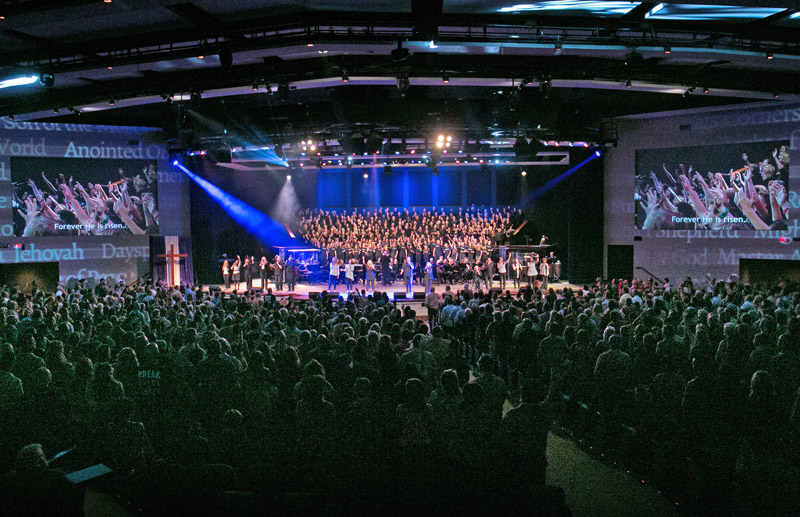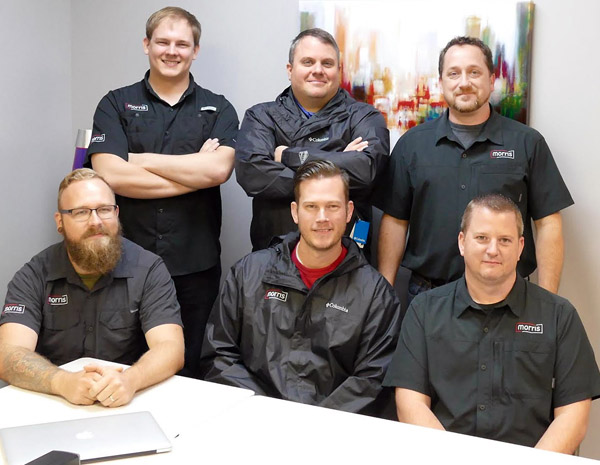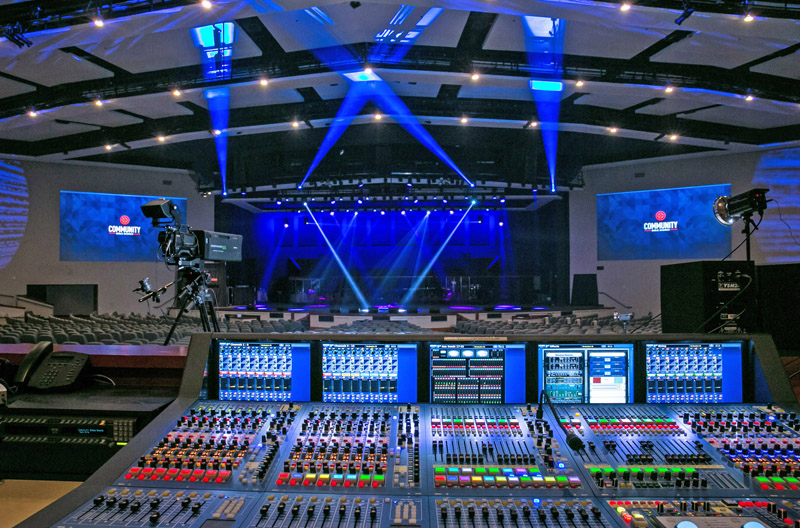
The scale and complexity of production at larger churches in the U.S. has grown exponentially over the past two decades. At the higher end of the scale, both the technology and expertise of the tech team is strikingly similar to that of arena-level concert tours.
Case in point is Community Bible Church (CBC) in San Antonio, the seventh largest church in the U.S. with more than 25,000 members attending services campus-wide each weekend.
Currently celebrating its 25th anniversary, the interdenominational, evangelical church presents contemporary worship that can involve more than 300 people performing in a single service, supported by top-shelf sound reinforcement, broadcast, video and lighting systems.
CBC facilities include a main auditorium that seats 3,500 and a central auditorium capable of hosting another 2,500, both of which received full production renovations in a project spanning several years at a price tag of about $5 million.
Morris Integration, the systems design-build and installation division of Nashville-based Morris Light & Sound, headed the multi-year project, which began with discussions with the church about upgrading all production systems and components that in some cases had been operating constantly for more than 10 years. It’s a process that culminated just a couple of months ago with final implementation.

Gaining Insight
“We partnered with the church to formulate a strategic plan to implement new systems in both auditoriums,” explains Morris CEO Danny Rosenbalm, a veteran of the church AV market. “Certain technology was near the end of its lifecycle, and some was coming close to failure mode. It was ‘roulette’ as to whether some of it would work from week to week, so it was time for a complete overhaul.”
He adds that it was imperative to gain a historical perspective from key players of the technical and executive staff of the church in order to know what worked for them in the past and what they where looking to accomplish. Since the technology lifecycle in the worship venues on campus is 10 to 12 years, the design had to provide infrastructure to accommodate current needs as well as provide expansion for technology upgrades in the future.
In order to accomplish these goals, the design team needed to future-proof the infrastructure and equipment as much as possible while keeping the systems consistent from a venue and campus perspective. The overall goal was to incorporate industry accepted digital protocols in a clean, consistent way while not getting so far ahead of the curve that the design wouldn’t be cost effective or efficient to implement from an integration perspective.

John Mills, noted for his work as a top systems tech in the live world, most significantly on the huge Kenny Chesney concert tours that crisscross North America every other year, served as the lead audio system designer on the CBC project. He was backed by a team of experienced specialists from Morris, and they all worked closely with CBC director of audio David Jones as well as pastor of communications Betsy Buhler.
Both the main and central auditorium systems utilize a similar design approach and components, so the focus here will be the larger main auditorium system. The room is wider than it is deep, with seating that begins at the front platform and tapers upward as you move out into the space. The room’s extensive ceiling is treated with an acoustical cloud system that helps keep sonic energy under control, furthered by padded seats, carpeting, and the absorption that occurs when the space is full of people.
Intricate Yet Simple
There were several factors that steered the decision-making process. CBC has a full orchestra of over 75 members, a choir with as many as 350 members on stage, and as many as 20 front-line singers. There are 128 channel paths from stage, front of house, and video control that need to be distributed to the front of house console, monitor console, video control, and the broadcast and post production studio. Minimizing the number of analog to digital conversions was deemed a must.

“With the amount and variety of input sources and dynamics coming from the stage, keeping the noise floor to a minimum was necessary to achieve the desired outcome,” explains Rosenbaum. “As a result, from stage inputs to loudspeaker outputs, there’s only one A-D and D-A conversion throughout the entire system.”
Director of audio David Jones was familiar with Midas digital consoles and favors the sound of the preamps and the workflow of the worksurfaces. As a result, the house system utilizes a Midas XL8, with a PRO 9 for monitors.
Both consoles share inputs from six DL431 3-way isolated split input/output units. The DL431 units also send an isolated split with separate gain control to the broadcast/post studio for maximum control over input sources for the mix uploaded to satellite broadcast. Two mic preamps inside each unit accommodates different gain-staging for front of house and monitors. And, a DL153 16-in x 8-out stagebox is at front of house to handle local input-output.
